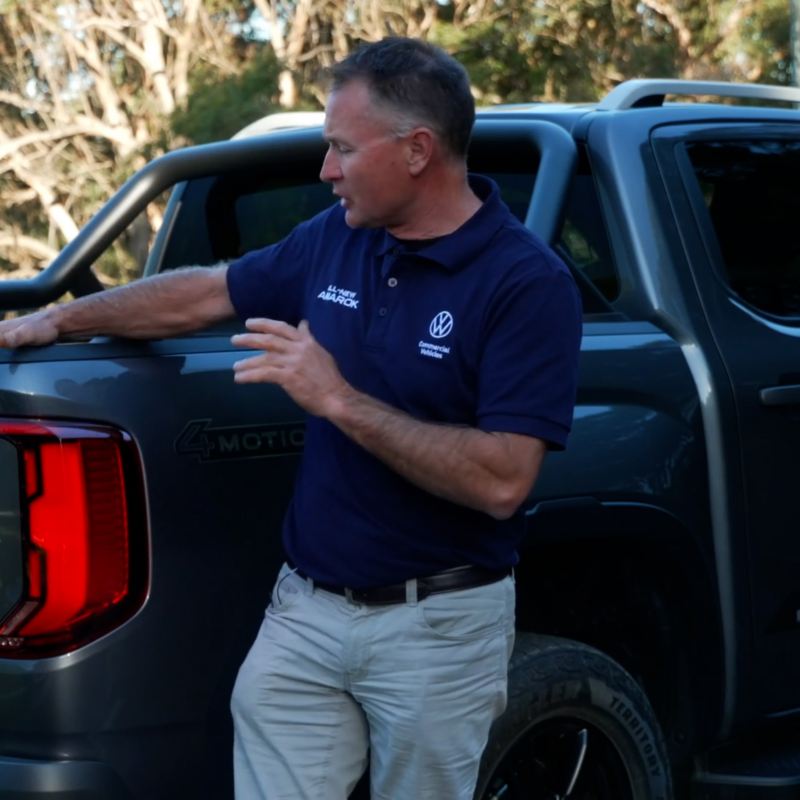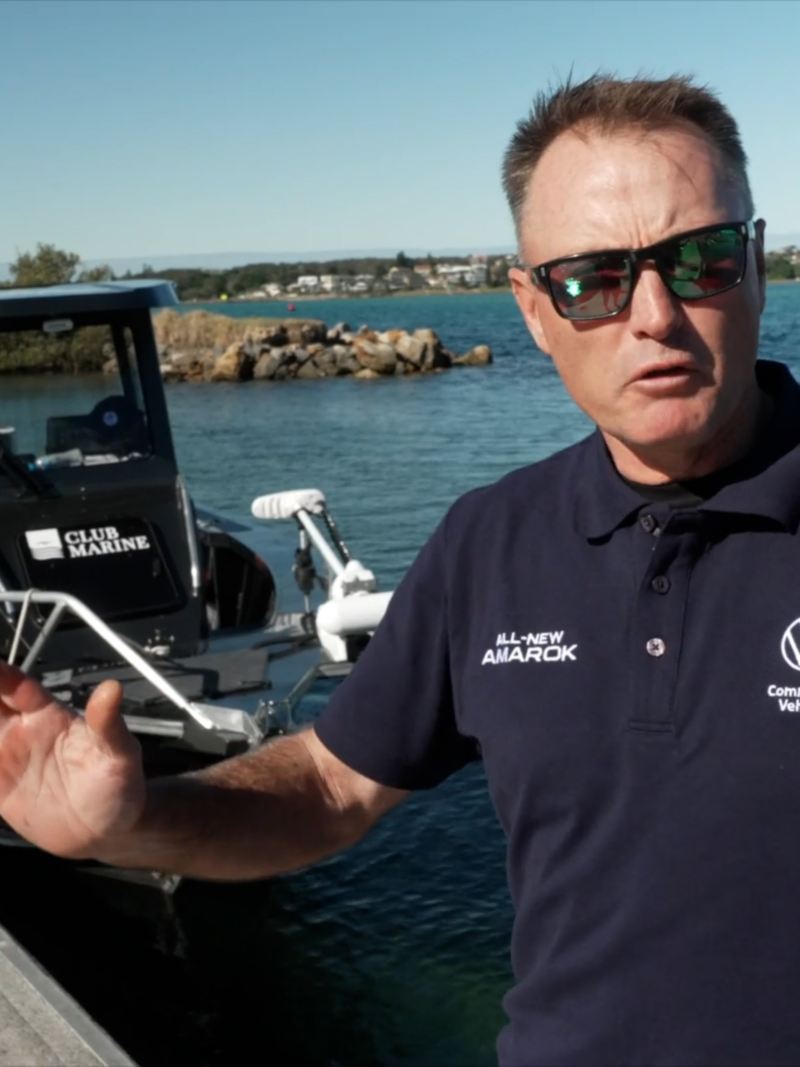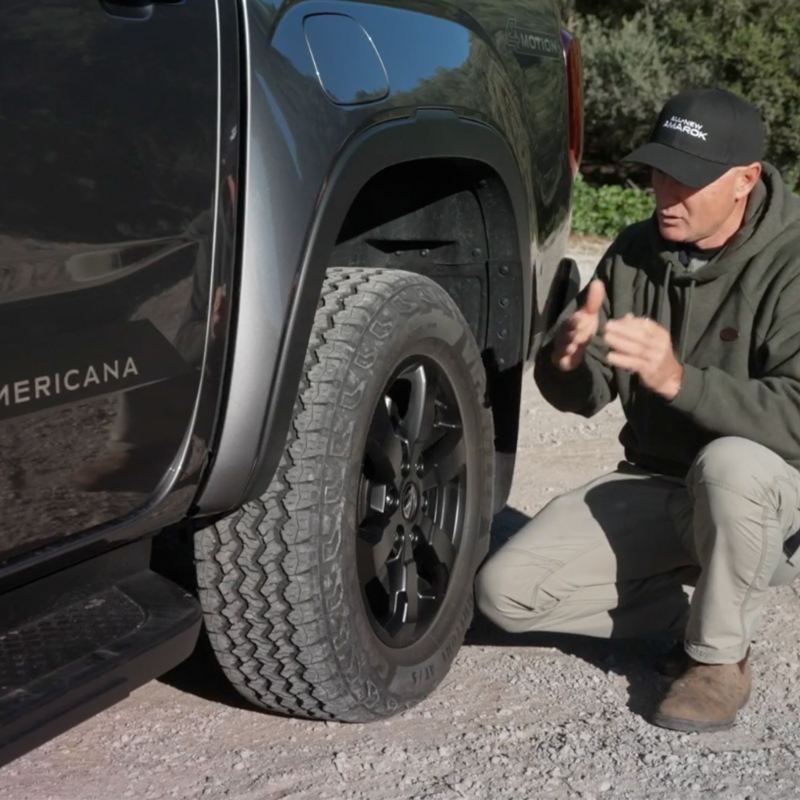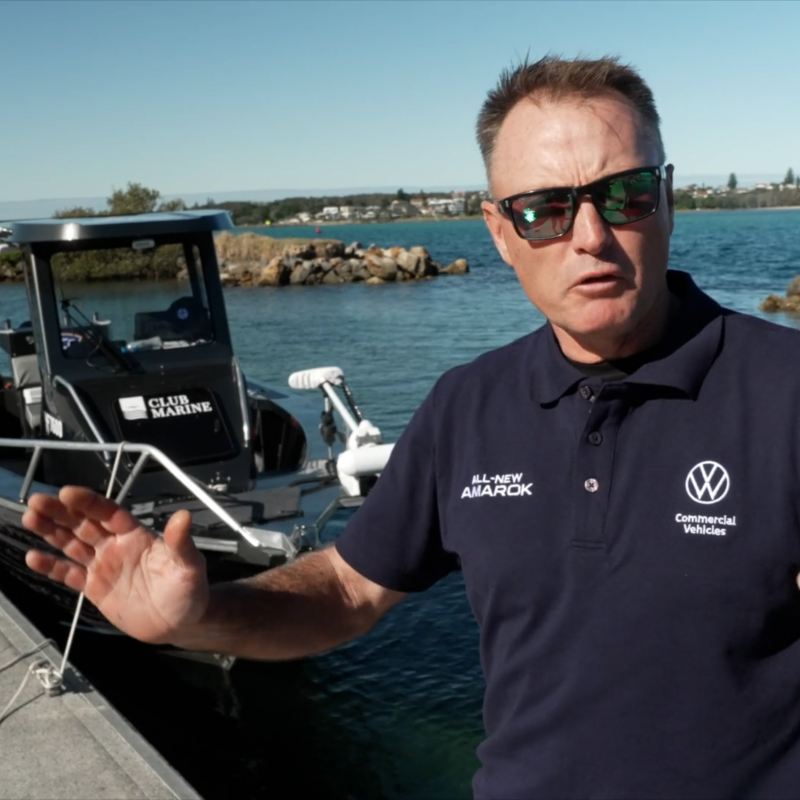How to drive on gravel
- Stick to the swept line: get the maximum amount of grip by avoiding the build-up on the edge of the road.
- Breaking distances: loose and wet surfaces can more than double your breaking distance. Concentrate, and stay vigilant for wildlife and other road users.
- Be aware of blind bends and crests: pull your speed back, stay left, and watch for oncoming vehicles.
- Sunglasses are a must: dappled light conditions can affect your ability to spot potholes and tree branches.
Video Transcript
G’day it’s Michael Guest here. I’ve got the new Amarok behind me and today we’re gonna have a bit of a look at driving on gravel roads.
So, the big difference with the gravel road against bitumen or sealed road is we’ve got this loose surface to deal with. So, we’ve got all these loose rocks, and dirt and gravel and they get build up in certain areas. So, we’ve got certain lines on the roads that are swept and other lines where that loose surface gets pushed away. So, I cut my teeth as a professional rally driver driving on gravel roads, so I’ve done my fair share of miles up and down. And there are a few tips and tricks to help keep you safe and we want to go through those.
So, roads like this they’ve got narrow creek crossings, they’ve got little bridges to deal with, got blind corners, trees, big shady areas where it’s difficult to see and blind crests. This is the PanAmericana, so it actually comes fitted with all-terrain tyres – it’s the off-road version of the New Amarok, it’s going to be perfect for the job.
Alright, let’s go for a drive.
Ok, so let’s pick the right mode to be driving on a gravel road with. So, if we hit the vehicle button and go again there… alright, and that gives us all of our modes. So, we’ve got normal that we’re in at the moment, eco, tow/haul, slippery conditions, mud/ruts, and deep snow and sand. So, there’s no mud and ruts here today, but on a really challenging sort of four wheel drive road you would definitely move into that and we would pick a different selection on our four wheel drive mode.
So, let’s go to slippery conditions which is virtually what we’ve got, and you’ll see straight away, soon as you hit slippery, and there’s actually a cool animation which comes up on the screen here which is just crazy. And it shows raining, but what it does – it takes it from 2 high, so two-wheel drive which is just the rear wheel driving, and puts it into an all-wheel drive mode, so what that then is it’ll engage the front wheels when it needs to on those slippery roads, so you don’t have to think about it. If you stayed just in two-wheel drive, then the front wheels won’t pick up any traction and they won’t come into play whatsoever. But we want all-wheel drive on a loose surface road like this. Once you put it into that slippery mode, it automatically goes into all-wheel drive so what happens then is that the Amarok will sense how much grip’s there and it will feed traction into the front wheels as needed.
Pair of sunglasses is a must really, on gravel roads like this, because you’ve got those dappled light conditions that you’ve got to deal with – where the sun’s coming through the trees and there can be potholes in there and there can be tree branches because the roads are lined with trees, especially after windy conditions.
So, we’ll move down here. Straight away we’ve got a really narrow culvert and there’s a bit brushy tree there blocking my view, so we wanna just pull our speed back, have a look – it’s only one car width wide so if you approach that too fast you can get into trouble if someone’s coming the other way.
And you’ll find these gravel roads, they’ve got these really nice swept line generally, unless they’ve just been graded. And then there’s a loose build up on the outside edges and sometimes even right in the crown of the road – depends on how wide it is.
So, we’ve got fantastic vision through here, so I can stick to the swept line and that is where the maximum amount of grip is, so we can stick to that swept line. There’s things like, just on the outside of that corner there, there’s a big deep culvert, so it’s not like a normal tarmac road or a freeway road where we’ve got Armco and we’ve got nice drains built on the sides, so, it’s a totally different concept and I think you’ve got to, you know, pull your speed back and think about that.
Now we’re coming up to a blind crest, straight away I need to keep right over to the left, pull my speed back – there could be someone coming the other way, somebody who’s maybe not doing the right thing too; too far over. Stay right across to the left, but straight away I’m into that loose surface – keep the speed down, have a bit of a look – we’re right to go, we can pop back onto the swept line. And I think that’s the big thing here, is really having that vision looking forward – don’t get trapped in – oh there’s a nice horse out there or there’s somebody’s cattle over there that you’re looking out at somebody’s farm.
Concentration has got to be up and down the road at all times, and you know, a lot of really well-maintained gravel roads, you can get along at a safe speed of up to 80km per hour, but you’ve really got to think about things like kangaroos running out in front of you, wild deer, stock, sheep and cattle and horses as well. So just pull that speed back.
The other big thing to think about when you’re driving on gravel road is braking distances. So, you’ve really got to pull your braking distances back. Think about it like you’re driving in the city on a really wet, slippery tar road. That’s what you’ve got to think about, so, braking on loose surfaces you need to nearly double the braking distance that you would on a normal, dry tarmac road, and sometimes even further depending on the conditions.
If it’s really wet and muddy, then you can nearly throw that out the door and you’ve got to really pull your speed back. So, depending on the type of road; this one’s a gravel road; so the grip even in a bit of rain will be pretty good on this road and it’ll drain well, but if you’re in a forest road that’s just a graded road and it’s virtually made of clay or soil it can get really slippery when it’s wet.
So just remember, keep to your left, pull your speed back, especially where those blind crests are, think about that loose surface build up on the edge of the road, pull those braking distances back. Stick to those points and that’ll help keep you safe on our gravel roads.




